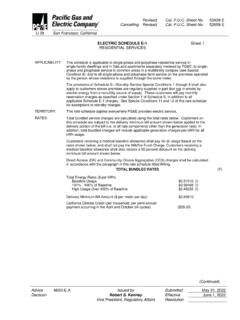Transcription of ROADMAP FOR ESKOM - Gov
1 ROADMAP FOR ESKOM IN A REFORMED electricity SUPPLY INDUSTRY 2019 ISBN: 978 0 621 47981 2 RP: 369/2019 The ROADMAP for ESKOM in a reformed electricity Supply Industry is compiled with the latest available information from departmental and other resources. Some of this information is unaudited or subject to revision. To obtain copies of this document, please contact: Public Enterprises Private Bag X15 Hatfield 0028 Tel: +27 12 4311150 The document is also available on the internet at: Printed by ABC Printers ROADMAP FOR ESKOM IN A REFORMED electricity SUPPLY INDUSTRY 2019 Republic of South Africa October 2019 CONTENTS ACRONYMS .. i Preface .. ii EXECUTIVE SUMMARY .. 4 INTRODUCTION .. 6 THE electricity CONTEXT .. 7 SOUTH AFRICA S electricity LANDSCAPE .. 7 LEGISLATIVE CONTEXT .. 7 The National Development Plan (NDP).
2 8 The Integrated Energy Plan and the Integrated Resource Plans .. 8 ESKOM CHALLENGES .. 11 FINANCIAL .. 11 GOVERNANCE AND LEADERSHIP .. 12 OPERATIONAL .. 12 STRUCTURAL .. 14 CLIMATE CHANGE COMMITMENTS .. 15 MOVING ESKOM FROM CRISIS TO STABILITY .. 16 A NEW BUSINESS MODEL .. 16 TRANSMISSION .. 17 Overview .. 17 The Creation of a Transmission Entity (TE) .. 17 Proposed Functions of the Transmission Entity .. 21 Procurement of New Energy .. 21 Risks and Dependencies .. 22 Finances .. 22 Overview .. 24 GENERATION OF electricity .. 24 New Business Model for the Generation Market .. 24 Future of Coal .. 24 DISTRIBUTION .. 25 The Distribution Environment .. 25 New Business Model for the Distribution Market .. 25 ESKOM FINANCIAL SUSTAINABILITY .. 26 CURRENT STATUS .. 26 ADDRESSING ESKOM S 26 Tariff Implications .. 28 Wasteful and poorly managed expenditure .. 28 Coal contracts.
3 28 IPP contracts .. 28 A new approach to procurement .. 29 Disposal and Partnerships of Certain Subsidiaries .. 29 Recovery of outstanding fees .. 29 Execution of employee related cost savings initiatives .. 29 Recovery of proceeds of corruption .. 29 GOVERNANCE .. 31 IMPLEMENTING A JUST TRANSITION .. 32 Sustainability for Workers .. 32 South Africa s Climate Change Position .. 33 IRP Commitments .. 33 ESKOM s Plan for Reducing Emissions .. 34 Sustainability for communities .. 34 In the National Interest .. 34 Smart Grid .. 34 IMPLEMENTATION OF ROADMAP .. 35 CONCLUSION .. 37 ANNEXURES .. 38 Distribution .. 38 The flow of electricity .. 38 South African electricity distribution industry structure .. 39 Municipalities .. 41 Generation and the IRP .. 42 CURRENT GENERATION .. 42 Generation s link to the IRP .. 44 Transmission .. 46 CURRENT TRANSMISSION BUSINESS .. 46 The transmission network performance.
4 47 Transmission Entity (TE) ROADMAP .. 48 Timelines for Creation of Transmission Entity 100% Owned by ESKOM Holdings .. 48 ESKOM tariffs .. 50 ECONOMIC REGULATION OF ESKOM S TARIFF .. 50 Implementation of MYPD methodology .. 50 Challenges on implementation of MYPD 51 Solution to implementation of MYPD methodology .. 51 Municipal 52 Financial sustainability and non payment .. 52 Power Sector Reform Experience: The Case of Vietnam .. 53 RATIONALE FOR electricity INDUSTRY REFORM .. 53 TIMELINE OF KEY POWER SECTOR REFORMS IN VIETNAM, 1970 2018 (REFER TO FIGURE 1) .. 53 VIETNAM S POWER SECTOR PERFORMANCE .. 53 LESSONS FROM VIETNAMESE electricity REFORM .. 53 PARTNERS .. 56 ROADMAP for ESKOM in a Reformed electricity Supply Industry i ACRONYMS DMRE Department of Mineral Resource and Energy Dx Distribution EAF Energy Availability Factor EFC ESKOM Finance Company ESAs electricity Supply Agreements ESI electricity Supply Industry FGD Flue Gas Desulphurisation Gx Generation IEP Integrated Energy Plan IPP Independent Power Producer IRP Integrated Resource Plan LPU Large Power Users LTSO Legally Separated Transmission System Operator MES Minimum Emission Standards MYPD Multi Year Price Determination MVA Megavolt Amperes NDP National Development Plan NEDLAC National Economic Development and Labour Council NERSA National Energy Regulator of South Africa PV Photovoltaic PPA Power Purchase Agreement RCA Regulatory
5 Clearing Account REIPPP Renewable Energy Independent Power Producers Programme SAPP Southern African Power Pool SOC State Owned Company SOE State Owned Enterprise TSMO Transmission System Market Operator TDP Technical Development Plan Planning Office TE Transmission Entity Tx Transmission ROADMAP for ESKOM in a Reformed electricity Supply Industry ii PREFACE Energy is changing. Across the globe, emerging technologies, changing customer sensibilities and the effects of climate change are reshaping how electricity is generated, supplied and consumed. As South Africa responds to these changes, it must also confront the specific challenges that threaten its electricity supply and constrain its economy. The need to reform the energy sector has been proposed in the past. In the 1998 White Paper on Energy Policy, Government had identified some of the reforms required to the electricity supply system, including the restructuring of ESKOM , to ensure a reliable, competitive and transparent system.
6 ESKOM was created in the 1920s to develop the mineral industrial complex that was taking shape following the discovery of abundant minerals in the late 19th century. ESKOM s vertically integrated structure was appropriate at its inception and served the country well for over 90 years. This configuration is no longer suitable to meet the country s energy needs and has made the business susceptible to the kind of problems it has recently experienced, including state capture. The restructuring of ESKOM into three subsidiary businesses generation, transmission and distribution is necessary to reduce the risk that ESKOM poses to the country through its dependence on fiscal allocations and inability to supply the economy with adequate power. The ESKOM that must emerge from these reforms must be capable, transparent, accountable, competitive and world class. Government has a responsibility to mitigate the systemic risk that ESKOM has become to the country.
7 This will start by making the organisation responsible in how it allocates resources to its operational activities, and that it is answerable for its performance at all levels. The special paper therefore: 1. Outlines actions to overcome the current crisis at ESKOM and set it onto a new path of sustainability that will benefit all South Africans for generations to come; 2. Defines the key steps in transforming the electricity supply system that are required, including the energy sources proposed by the 2019 Integrated Resource Plan (IRP); 3. Addresses steps to restore ESKOM s finances, including government support; 4. Identifies measures to reduce the cost structure of ESKOM to enable provision of affordable electricity ; and 5. Details the process through which the restructuring of ESKOM will take place, including the process through which a new transmission entity will be established.
8 The electricity reform process will take place over several years, and will ensure that South Africa has an appropriate electricity supply system capable of responding to the demands of a rapidly evolving world, to which South Africa, if it is to compete, needs to be responsive. The ESKOM that shall emerge will be characterised by optimised operations, restructured finances, a sustainable business model, and an environmentally responsive electricity system. The business shall implement appropriate controls to ensure that the recent incidences of irregular, fruitless and wasteful expenditure are a thing of the past. Importantly the reform of ESKOM , through the retiring of end of life power stations and diversification of primary energy sources, will minimise the impact on ESKOM s and related industries workers and communities. In managing the transition, alternative economic activities shall be developed and implemented to economically sustain communities dependent on the power stations and associated coal mines.
9 The success of the reforms will depend on South Africans fulfilling their civic responsibility to pay for services consumed. The State, through the executive and elected representatives in all three spheres, and ROADMAP for ESKOM in a Reformed electricity Supply Industry iii in collaboration with other social partners such as labour, religious organisations, organised business and civil society, will address issues of non payment of services. The Free Basic electricity system shall be resourced to adequately cater for indigent families unable to pay. The product of the reform process that is being initiated by the special paper should be an agile ESKOM capable of integrating emerging technologies and inevitable regulatory reforms. It will be an ESKOM that is responsive to market demands through an optimised tariff structure that will provide South Africa with affordable and reliable electricity .
10 Further, the business will generate from its operations adequate cash to fund its operational and capital programmes. Importantly, the above reforms require leadership and personnel at ESKOM that have the technical capability and capacity to manage a sophisticated and world class organisation that the aspirations of the country and its people demand. To realise these reforms, tough decisions will have to be made and implemented. Government on its own cannot effect the changes required to realise the vision of a sustainable electricity supply system. This is a national effort that will require all institutions, organisations and citizens to play their part. ROADMAP for ESKOM in a Reformed electricity Supply Industry 4 EXECUTIVE SUMMARY In February 2019, I said that we will make big decisions and take bold steps to embark on a process to fundamentally restructure ESKOM and the electricity Supply Industry.
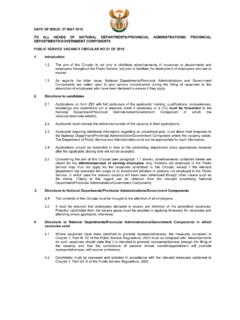
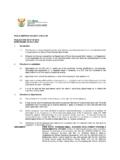
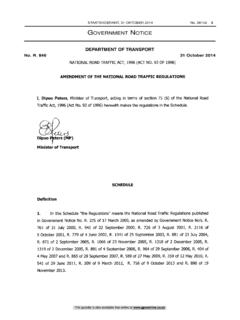
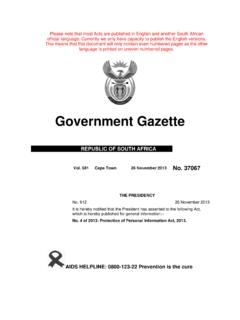


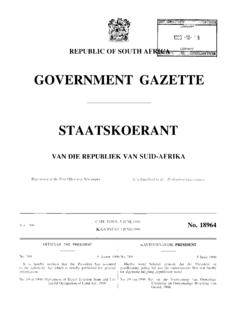
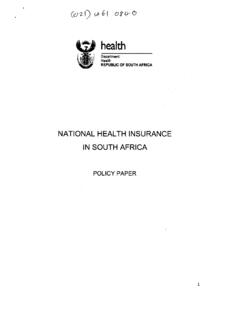
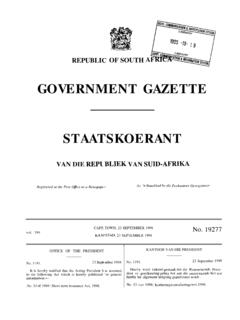
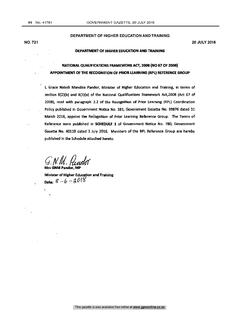
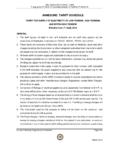
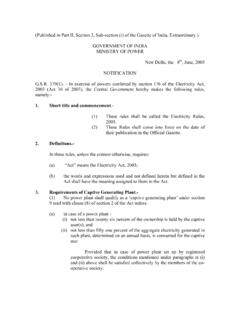
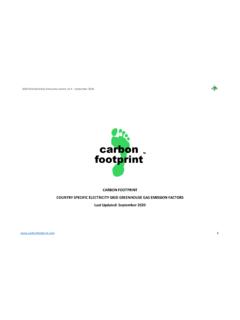
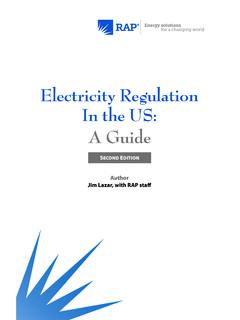
![Electricity Regulation Act [No. 4 of 2006]](/cache/preview/6/a/5/5/a/0/d/5/thumb-6a55a0d556b9c34cf91d66ae31989ed3.jpg)
